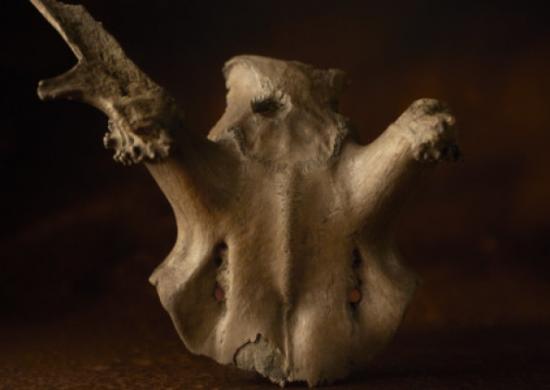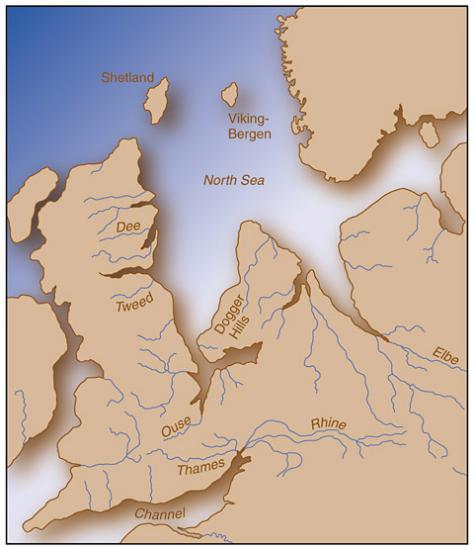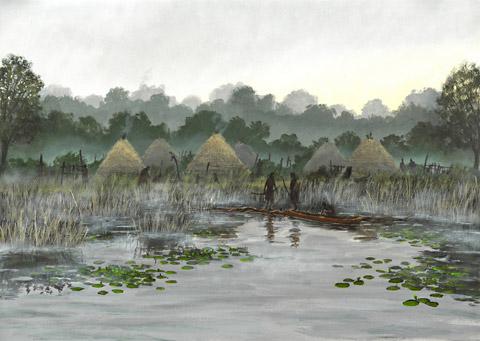Life in Yorkshire at the end of the Stone Age
Matt Clark
Source - http://www.yorkpress.co.uk/leisure/exhibitions/10441593.Life_in_Yorkshire_at_the_end_of_the_Stone_Age/

Professor Nicky Milner holds an 11,000 year-old red deer head dress, which was thought to be used during shamonic rituals by Mesolithic hunters at Star Carr.

A stag frontlet unearthed at Star Carr
After seventy millennia as an arctic wasteland, Britain’s temperatures slowly started to rise and as the retreating ice released its grip on the land, people migrated northwards, because at the time the country was still joined to the continent.

This map shows the extent of Doggerland, the North Sea Plain that connected Britain to the continental mainland during the early Mesolithic period when settlers moved to Star Carr in the Vale of Pickering
One of the areas chosen as a settlement was next to a lake near Scarborough; a heavily forested landscape populated by elk, bears and deer.
For thousands of years, its history lay uniquely preserved by a blanket of peat and it wasn’t until 1948 that the settlement finally yielded its secrets.
But only to academia.
Although Nicky Milner grew up nearby, she was oblivious to the fact that her soon-to-be life’s passion lay buried a few metres beneath the fields she played in as a girl.
Now as a history professor at the University of York, she is addressing one of archaeology’s big questions: What was Star Carr?
Professor Milner says the site has developed an air of mystery, with many different interpretations from a hunting camp to a site for ritual activities.

How Star Carr in the Vale of Pickering is thought to have looked
However, her team has unearthed many new clues at the site including the remains of an 11,000 year old house; the earliest ever found in Britain and from today their findings will be shown at the Yorkshire Museum.
Highlights include a replica of the house, the first evidence of carpentry in Europe, amber jewellery and a red deer head dress found during previous excavations, courtesy of Scarborough Museums Trust, But we still don’t really know its purpose.
“A lot of hunter gatherers believed that animals were their ancestors,” says Professor Milner. “We think they probably dressed up and tried to transform themselves into red deer during shamanic rituals, possibly to contact the animal spirits in order to get a better hunt.”
Twenty-one of the head dresses were found at Star Carr and there are only two other examples known in Europe, making the site one of the most important from the Mesolithic period.
“Star Carr is really famous in the archaeological world,” Professor Milner says. “But outside noone seems to know about it.
“The Mesolithic period has been much ignored for some reason. But I thought how can an amazing site be on my doorstep and I know nothing about it. So I ended up studying it and later became lucky enough to excavate it.”
For the first time since they were discovered, all the objects have been brought together under one roof.
They will be displayed alongside digital content to give visitors a taste of the sights and sounds our ancestors would have experienced against a stunning mural by artist Ric Duffield.
“The key thing was to get the story out and paint a picture of Mesolithic life,” says Professor Milner. “The perception is of cavemen but the more we look, the more we realise just how sophisticated they were.”
.